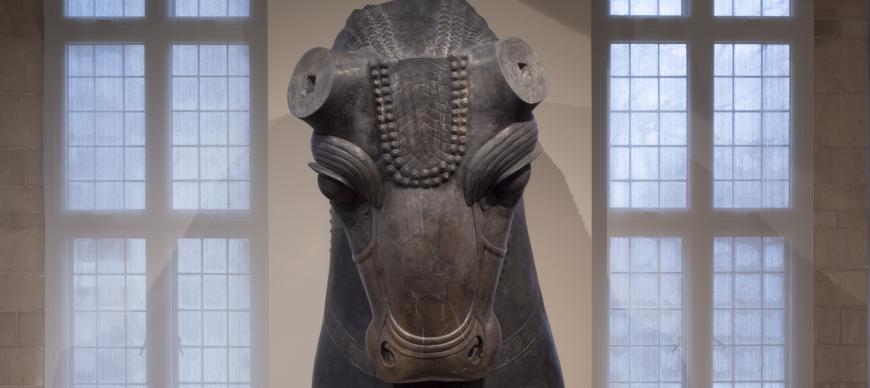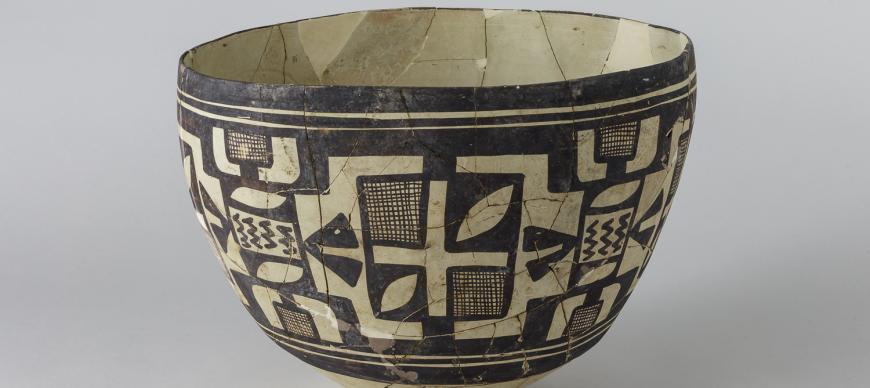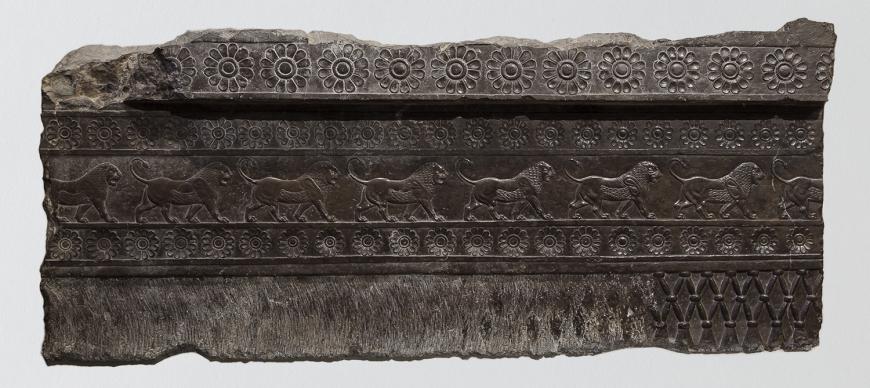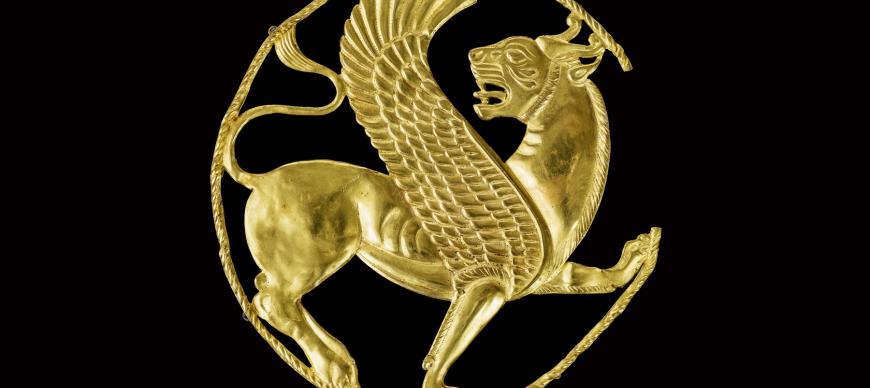The Robert and Deborah Aliber Persian Gallery welcomes you to trace the development of cultures of ancient Iran while gazing upon a colossal bull head from Persepolis, a dynastic center of the Achaemenid Empire that stretched from Egypt to Pakistan. Highlights include painted ceramics from Chogha Mish and Tall-i-Bakun; limestone sculpture from Persepolis; a collection of Persian gold jewelry; and coins and ceramics from the early Islamic period.
The majority of the objects in this gallery were excavated by ISAC’s Persian Expedition (1931–39) at the sites of Persepolis, Tall-e Bakun, and Istakhr. Additional objects were excavated by ISAC’s Chogha Mish Expedition (1961–78).





